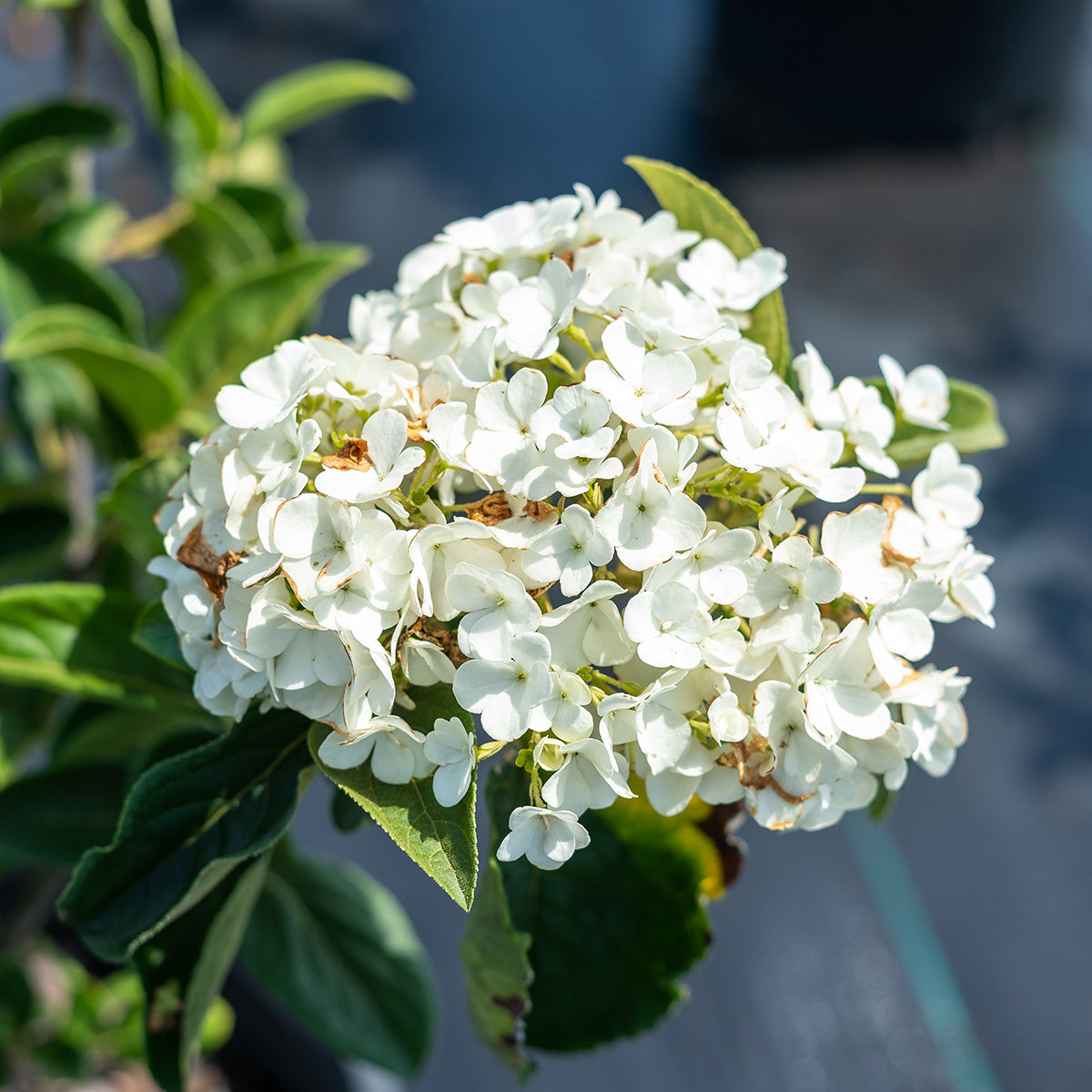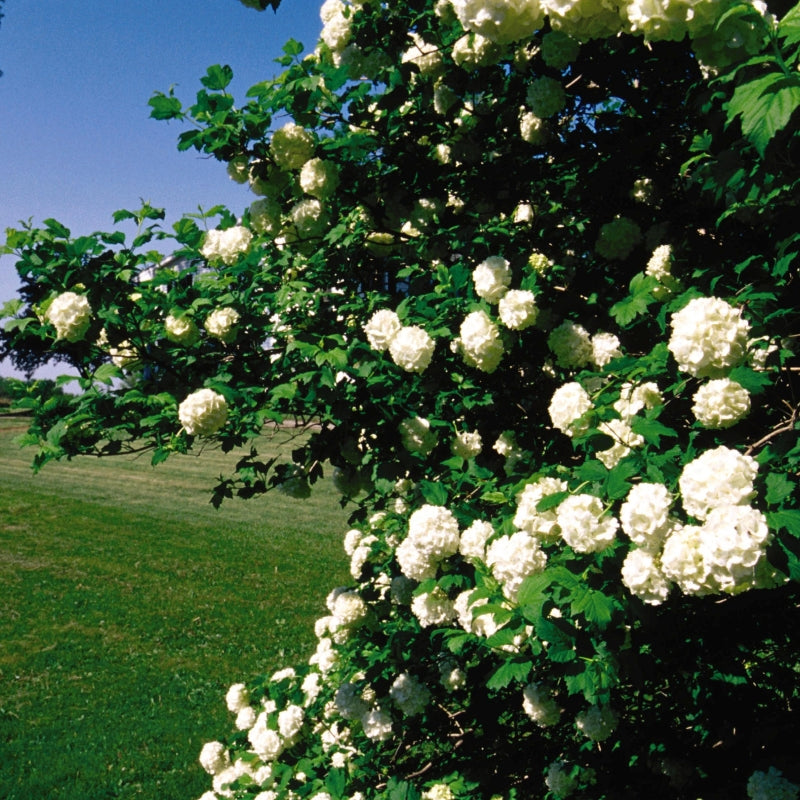These 4 simple steps for pruning a snowball bush viburnum can give you the best blooms, plus we reveal the pitfall to avoid that will ruin any display
Know how and when to prune a snowball bush with this expert pruning guide

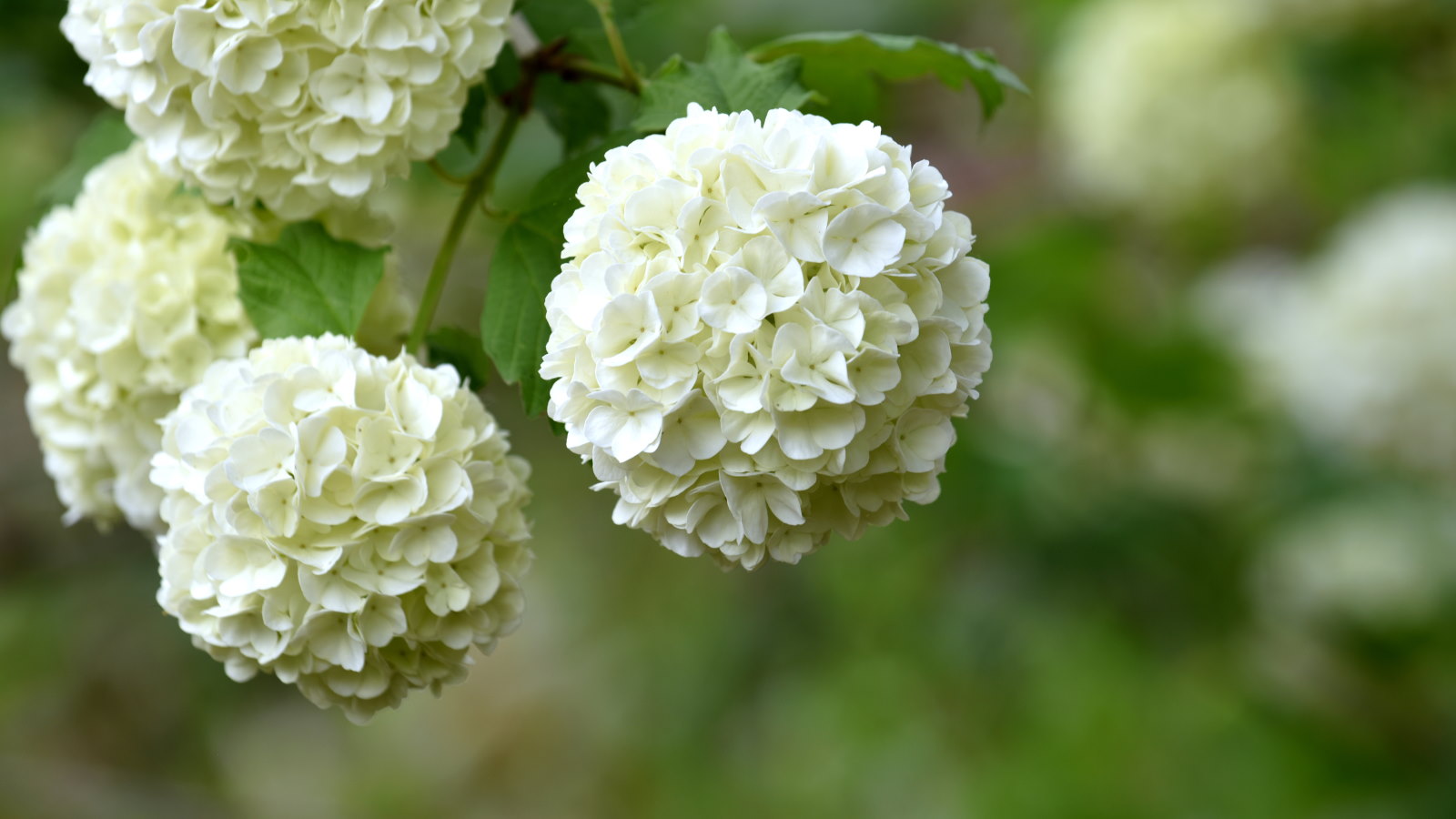
A snowball bush is a common name for a snowball viburnum, named for its large, spherical white flowers that bloom in spring. It makes an excellent, showy shrub for a flower bed, and regular pruning keeps it healthy while providing a stunning display of blossoms.
These sought-after shrubs are excellent viburnums to grow if you desire a plant with year-round interest, thanks to their spring flowers, dark green leaves, and fall berries. A quick and easy annual trim is all you need to maintain your shrubs' appearance and performance.
This guide focuses on snowball viburnum pruning, including the right time to trim and the four key steps to follow when you prune a snowball bush. It also reveals the one major mistake to avoid that is guaranteed to destroy any potential display.
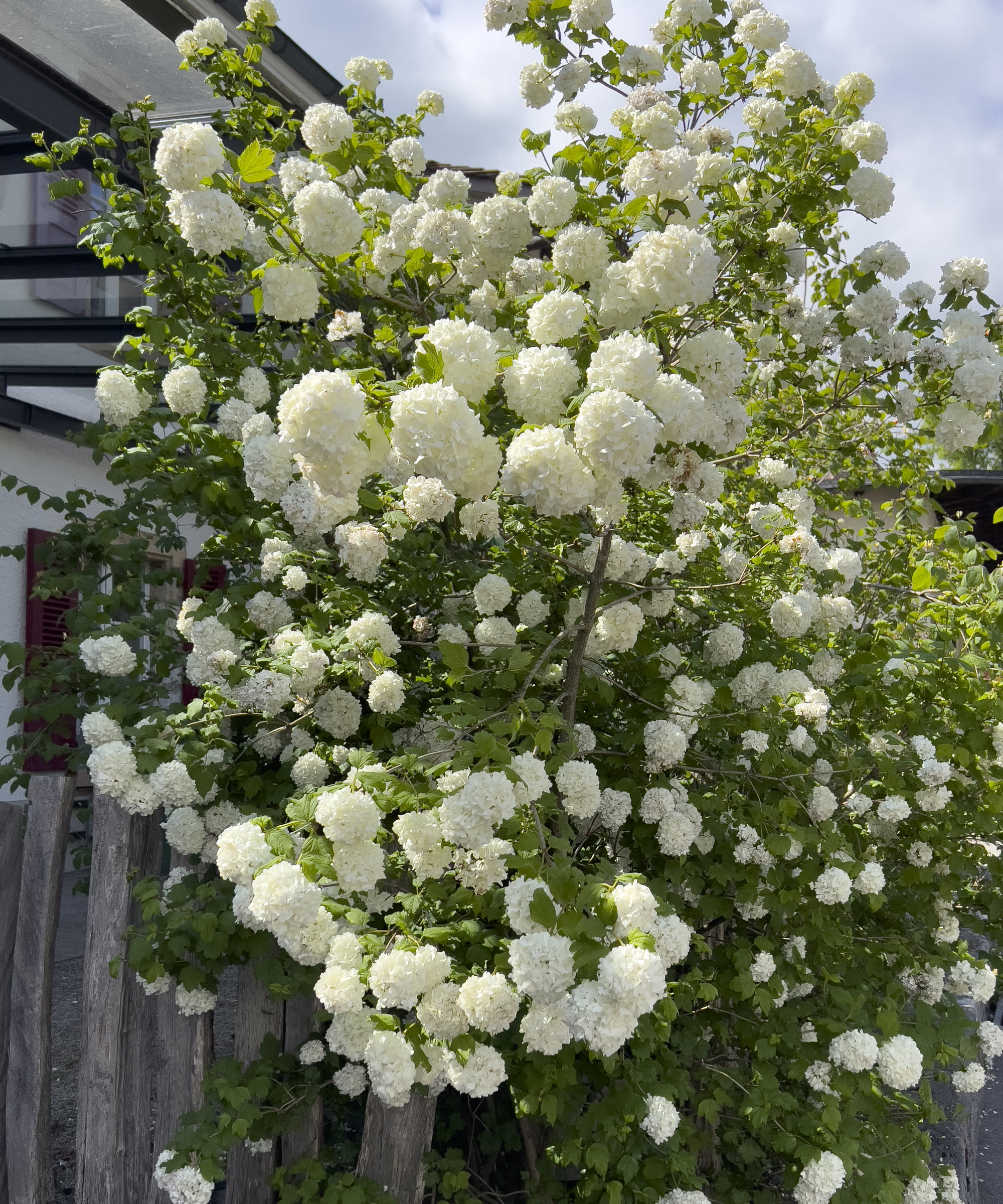
How and when to prune a snowball bush
Pruning viburnum keeps the shrub healthy and beautifully shaped, boosting its overall appearance. It also promotes new growth and guarantees you the best flowering. Let’s start with when to prune a snowball bush, so you avoid making a shrub pruning mistake that can jeopardize any display.
When to prune a snowball bush
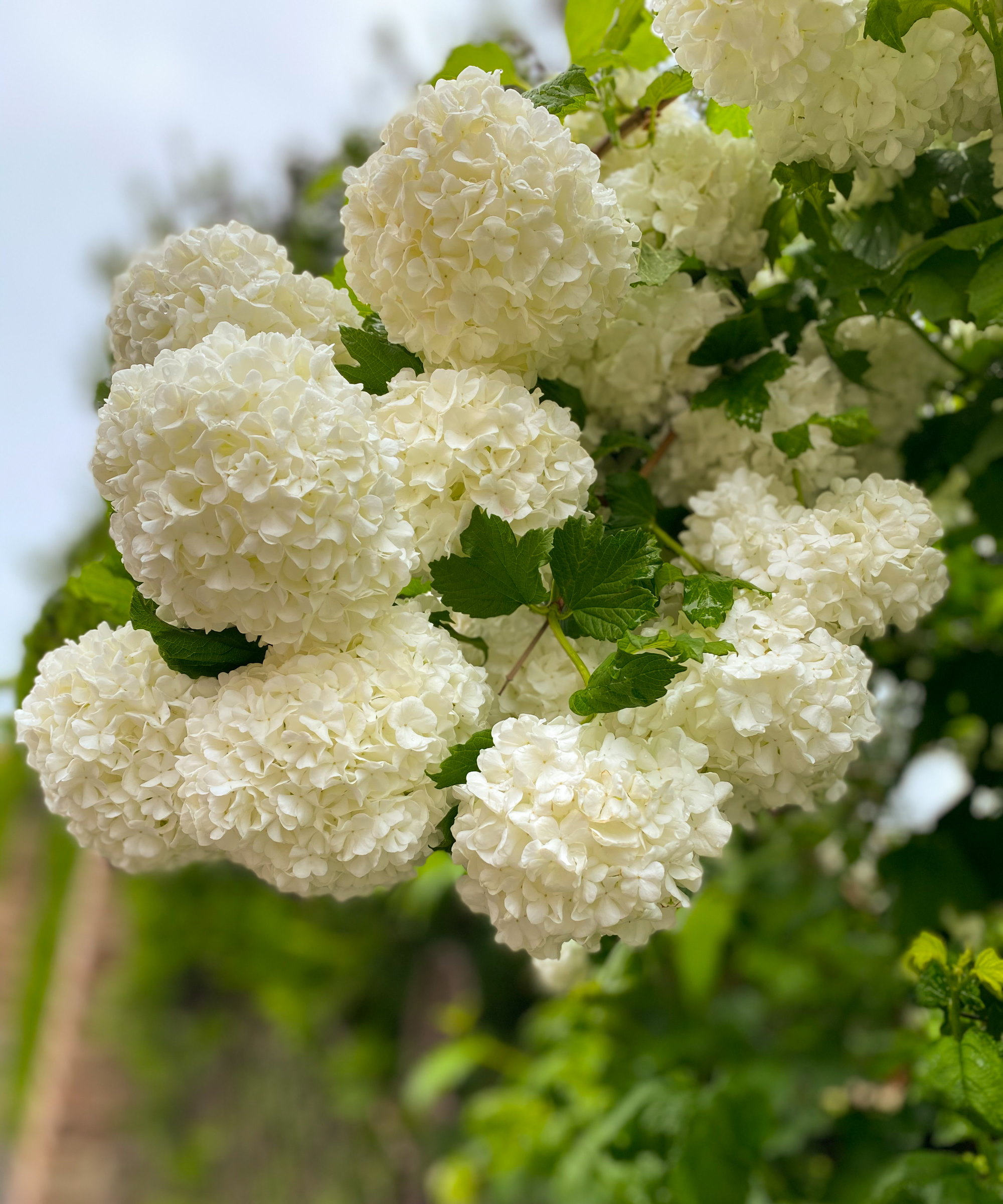
Knowing when to prune shrubs enables them to respond better to trimming, ensuring that their health is not harmed by improper techniques.
A snowball viburnum is a deciduous shrub, but should not be pruned during winter or early spring. It is classed as a spring-flowering shrub, and the rule of thumb is that any shrub that blooms before June is pruned after it has bloomed
Such shrubs bloom on wood produced the previous growing season. Nikki Bruner from Perfect Plants Nursery says that pruning after blooming will encourage new growth to emerge with fresh foliage and the buds to carry next spring’s flowers.
Design expertise in your inbox – from inspiring decorating ideas and beautiful celebrity homes to practical gardening advice and shopping round-ups.
‘Pruning before the flowering season can reduce the blooms,’ she warns. ‘So it's best to wait until after flowering to do any pruning.’
Act fast after flowering is over, as waiting too long to trim risks removing next year’s flower buds and ruining any potential display. The blooms tend to be out in April and May (depending on your location), and prompt pruning gives the shrub ample time to produce new growth and buds.

Nikki Bruner is the marketing manager at Perfect Plants Nursery. With a passion for plants and expertise in marketing, Nikki combines her knowledge of the nursery industry with her creative thinking to promote and highlight the exceptional offerings of Perfect Plants Nursery. She is dedicated to ensuring customer satisfaction and providing valuable insights for plant lovers.
How to prune a snowball bush
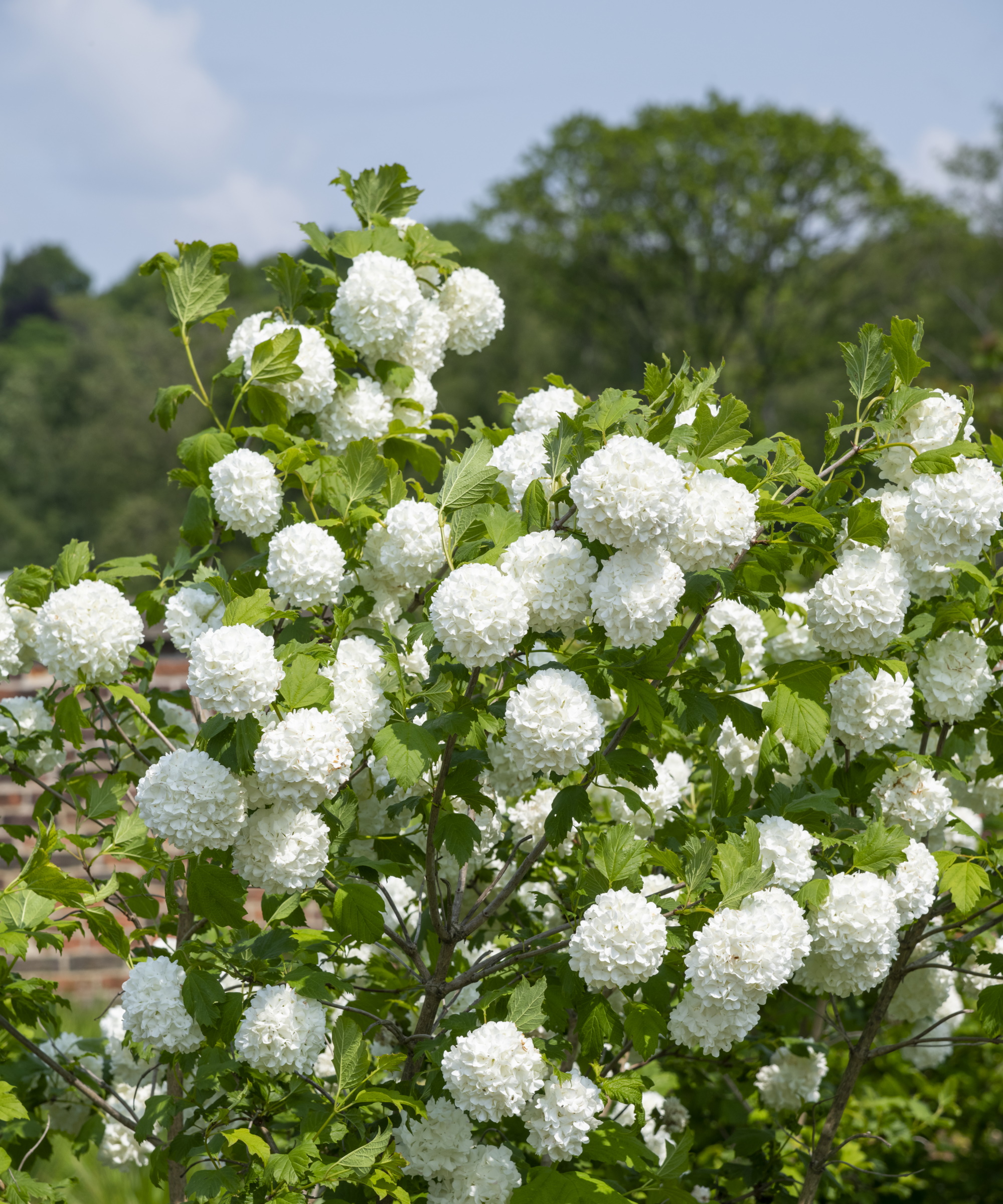
Ensure that all your pruning tools are clean and sharp before pruning. The tools required are pruning shears, loppers, or a pruning saw (if you have a large, older snowball bush). Well-maintained tools make pruning more efficient, and a shrub can quickly heal from clean cuts rather than jagged ones and be susceptible to pests and diseases.
There is usually little need to prune a snowball bush heavily, provided it is trimmed regularly. A well-maintained snowball bush can be pruned in the following four steps:
- Inspect the shrub for dead or diseased branches and remove these completely
- Look for any branches that are crossing and remove them. Such crossing branches can rub together and become entry points for diseases
- Nikki Bruner says next comes the time to ‘thin out overcrowded branches to improve air circulation’. Removing inner branches also helps with light penetration into the shrub. This can be done by removing up to a third of the oldest branches and trimming out any weak growth. Cutting out older wood encourages the growth of more vigorous younger branches.
- Finally, it is time to shape the shrub. Nikki Bruner recommends cutting back longer branches that have grown outside the desired shape to encourage ‘bushier growth’. Any pruning cuts should be made to a healthy set of outward-facing buds.
There are options to prune a snowball bush more severely if it is large or overgrown. This includes cutting it down to two to three feet above ground level.
However, Nikki Bruner does not recommend such an extreme approach. ‘While snowball bushes can tolerate hard pruning, it's best to avoid cutting back more than 1/3 of the plant's total growth at once to avoid added stress,’ she warns.
Rather than hardly cutting it right back in one go, observe the one-third pruning rule and prune it back by a third each year until the shrub is controlled at the desired size.
FAQs
Can I prune a snowball bush in the fall?
Pruning a snowball bush in the fall would be an error, as you would remove wood and flower buds intended to carry next spring’s blooms. Pruning in fall also risks the shrub putting out a flush of new growth that would not have sufficient time to harden off properly and be damaged by winter frosts. This leaves the shrub susceptible to pests and diseases.
A snowball viburnum is not an invasive species; however, some viburnums are. For example, the Japanese snowball (Viburnum plicatum) is one type classed as an invasive plant.
The two shrubs are similar-looking, but the Japanese snowball has a creased texture on the foliage compared to the smooth leaves of a snowball bush. Check your shrub to ensure it is not the invasive variety, and, if it is, the recommended measures are to remove the fruits to prevent spreading or dig out the plant.

Drew has worked as a writer since 2008 and was also a professional gardener for many years. As a trained horticulturist, he worked in prestigious historic gardens, including Hanbury Hall and the world-famous Hidcote Manor Garden. He also spent time as a specialist kitchen gardener at Soho Farmhouse and Netherby Hall, where he grew vegetables, fruit, herbs, and cut flowers for restaurants. Drew has written for numerous print and online publications and is an allotment holder and garden blogger. He is shortlisted for the Digital Gardening Writer of the Year at the 2025 Garden Media Guild Awards.
